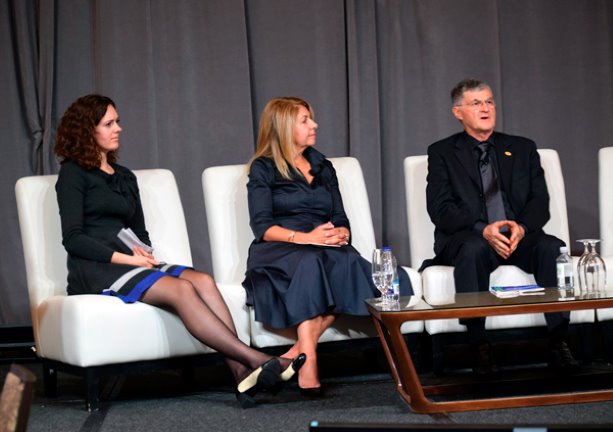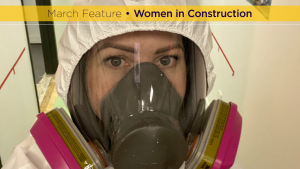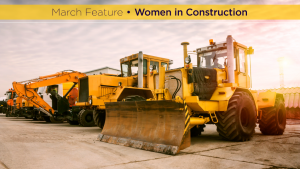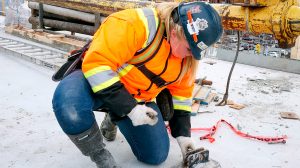The difficulties engineering firms have retaining female engineers went from elephant-in-the-room status to a front and centre discussion piece at the recent Association of Consulting Engineering Companies — Canada (ACEC) conference in Ottawa.
The issue came up during a panel discussion held during a session titled, Is Anybody Out There? How to Find, Attract and Retain Talent.
At least three surveys published since 2014 have reported female engineers leave the profession in startling numbers, never to return. An obvious reason typically identified is raising a family but a Harvard study listed a "macho" work environment and a "mysterious" career path, in the words of one ACEC panelist, with no role models to follow, as other reasons.
An audience question from ACEC Northwest Territories president Katrina Nokleby launched the topic.
"As a professional engineer, when I do get the chance, which is rare, to connect with other women in the profession, one of the recurring themes I am hearing, we all feel very inadequate, we take a lot on ourselves," said Nokleby, who said in a later interview she has left five engineering firms during her career citing a lack of support from management and sexist behaviour among the causes. "What can you do in a company to support women given the stresses that we have?"
Panelist Catherine Karakatsanis, the chief operating officer of Morrison Hershfield, fielded the question.
"The fact that women are in such small numbers in our firms makes it inherently difficult for women for sure," she said, and proceeded to list five reasons for the failure to retain women in the profession found in the Harvard report that also indicated 50 per cent of women leave the career for good.
"The sad part is, when you survey them, 75 per cent of them love what they do, but they just can’t manage the workload and pressures."
Karakatsanis and another panelist, Sooky Lee, a vice-president of HR at ADP Canada, offered insights into how engineering firms could address the problem.
Karakatsanis said her firm had abandoned its 50-year practice of only permitting full-time workers to become partners.
"That opened the door for a lot of women who were working part time," she said. "Women who feel valued that way will tend to return to the firm after having children."
Permitting flexibility in work hours also helps, said Karakatsanis: "So you don’t look down on women who have to stay home to work, but look at more the contribution, and the output, the success of the work they do.
"Some incredible women working part time, what they produced part-time was better than others who worked full time."
The 2016 SWE National Gender Culture Study in the U.S. found that women make up more than 20 per cent of engineering school graduates but only 11 per cent of practising engineers.
One key to recruiting female talent, said Lee, is taking steps to ensure there is at least one successful female on staff already.
"Many times I have heard, ‘Just seeing so and so (a woman), it means the world to me because it means I can be successful here in this organization too,’ " she said.
Failing that, male engineers, including managers, can commit themselves to creating "communities" of "sponsorship and support," said Lee.
The SWE survey indicated that 30 per cent of women who leave the profession cite workplace climate as the reason. Karakatsanis said she hears this regularly in workshops.
"I hear a lot of horror stories because people open up to me and have been at some workshops where the workplace environment is not good," she said. "And rather than fix the problem they often move the woman around.
"Should they be the ones who are moved because of the problem?"
Nokleby said she has been through numerous uncomfortable situations such as impromptu shoulder rubs and when she did not feel supported by management, she felt she had to move on.
She said it is particularly bad in work camps in the Far North.
"There was no support for me as one of the females in the camp," she said. "I dealt with drillers who wouldn’t stop staring at me, people who would tell me day two they were sick of my opinions, people who would put their hands on me, comments about my chest."
ACEC president John Gamble said engineering firms must meet the issue head on.
"It is a business issue that is particularly acute in our industry," he said. "And we would be completely remiss if we did not meet it head on."
Ten Tips for Talent Hunters
OTTAWA — Panellists at a recent Association of Consulting Engineering Companies — Canada session on recruiting and retaining engineering talent offered these tips:
• Since young graduates and professionals tend to shop around the first few years of their careers to find the right fit, firms need to develop a special reputation and brand.
• Young recruits more than ever need to hear there is meaningful and challenging work available. Women in particular are interested in giving back to society.
• Women will read a recruitment ad and take it literally. For example, if it says 10 years of experience is required, if a woman has nine, she probably won’t apply, whereas a man with six will say that’s close enough. The answer is careful wording to ensure all qualified people apply.
• Firms need to promote leading edge technology with workplace mobility on multiple devices as an asset they can sell to young recruits.
• Many modern workplaces have eliminated offices, with managers and staff freely associating and collaborating to encourage teamwork — that’s a plus for recruits.
• Significant use of co-op employment offering engineering students workplace experience is an excellent hiring tool.
Firms that can ride out boom and bust cycles through sustainable manpower practices will attract recruits looking for protection from hiring and firing cycles.
• In today’s competitive hiring environment, perks such as frequent conferences, powerful computers and sit-stand work stations make a difference.
• Firms with international branches or partners should consider flexible placements, with long-term overseas stints no longer the only way to offer this kind of experience.
• Personnel departments should make gender intelligence programs an important part of their recruiting strategies. Mentorship programs using successful women are an important tool for attracting female engineers.











Recent Comments
comments for this post are closed